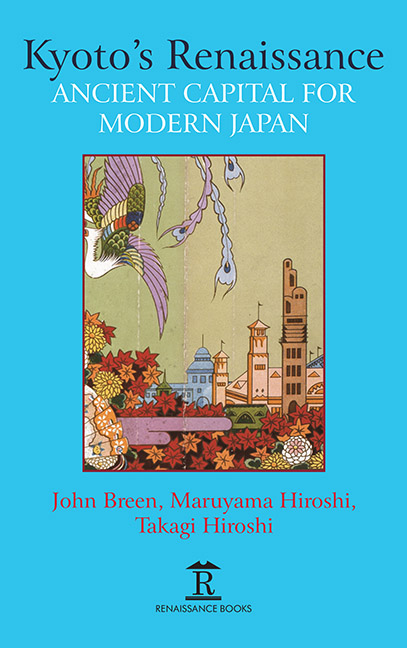Chapter 9 - Trends in Modern Kyō-yaki Pottery: On Design in the Meiji Period
Published online by Cambridge University Press: 30 April 2022
Summary
INTRODUCTION
PRODUCTS TYPICAL OF Kyoto industries are textiles and ceramics. Famous amongst the former are textiles woven in the Nishijin district of Kyoto, known as Nishijin-ori, and dyes known as yūzen-zome. Ceramics for their part are best represented by Kyō-yaki pottery. Kyō-yaki is a generic term for such varieties of pottery produced in Kyoto as Awata-yaki, Kiyomizu-yaki and Omuro-yaki. All are made by high-grade production techniques; they feature designs that combine refined shapes, coloring and patterns, and are typically valued more highly than ware from other pottery producing areas. Kyō-yaki owes its flourishing to the design motifs created mainly by potters active in the first half of the Edo period (1600–1867) such as Nonomura Ninsei (whose dates of birth and death are unknown) and Ogata Kenzan (1663–1743). Edo period practices are still in evidence in the twenty-first century, but a new approach to Kyō-yaki design, at variance with that of former generations, came to be adopted in the early Meiji period. Indeed, it was in Meiji that the wide divergence of Kyō-yaki designs familiar to us today had their origins.
With the Meiji Restoration of 1868, the new government actively promoted exports based on a policy of energizing new industry; the pottery manufacturing industry in Kyoto was gifted a role here. Modern Kyō-yaki differed from the pottery of the Edo period not least in that it went in search of an overseas market. There emerged a need therefore to gauge the preferences of Western consumers when producing artifacts that had previously been made to match Japanese tastes. This proved to be a serious challenge for ceramic artists, whose aim throughout the Meiji period was of course to promote the sale of their products.
So it is that, in this chapter, I first offer an overview of the activities of ceramic artists who sought out markets in Europe and America in the Meiji period, before examining designs of special note, which artists created especially for this purpose in the production of their wares.
Earlier discussions about design have tended to focus primarily on clarifying transformations based on contemporary works or design albums or the archives of expositions. In this chapter, however, my discussion will not be limited to observations about transformation alone, for I wish also to clarify the thinking that lay at the root of change.
- Type
- Chapter
- Information
- Kyoto's RenaissanceAncient Capital for Modern Japan, pp. 220 - 244Publisher: Amsterdam University PressPrint publication year: 2020



